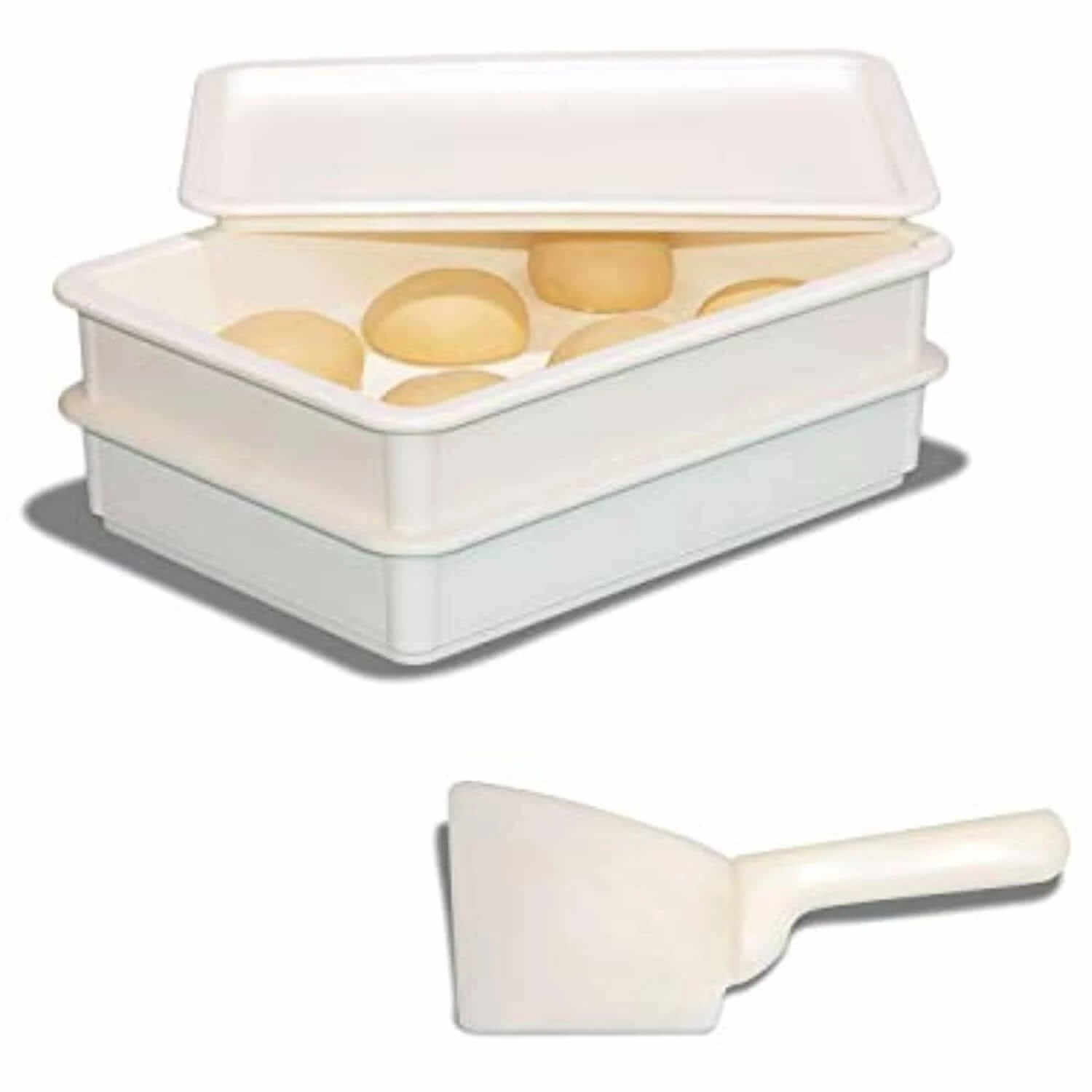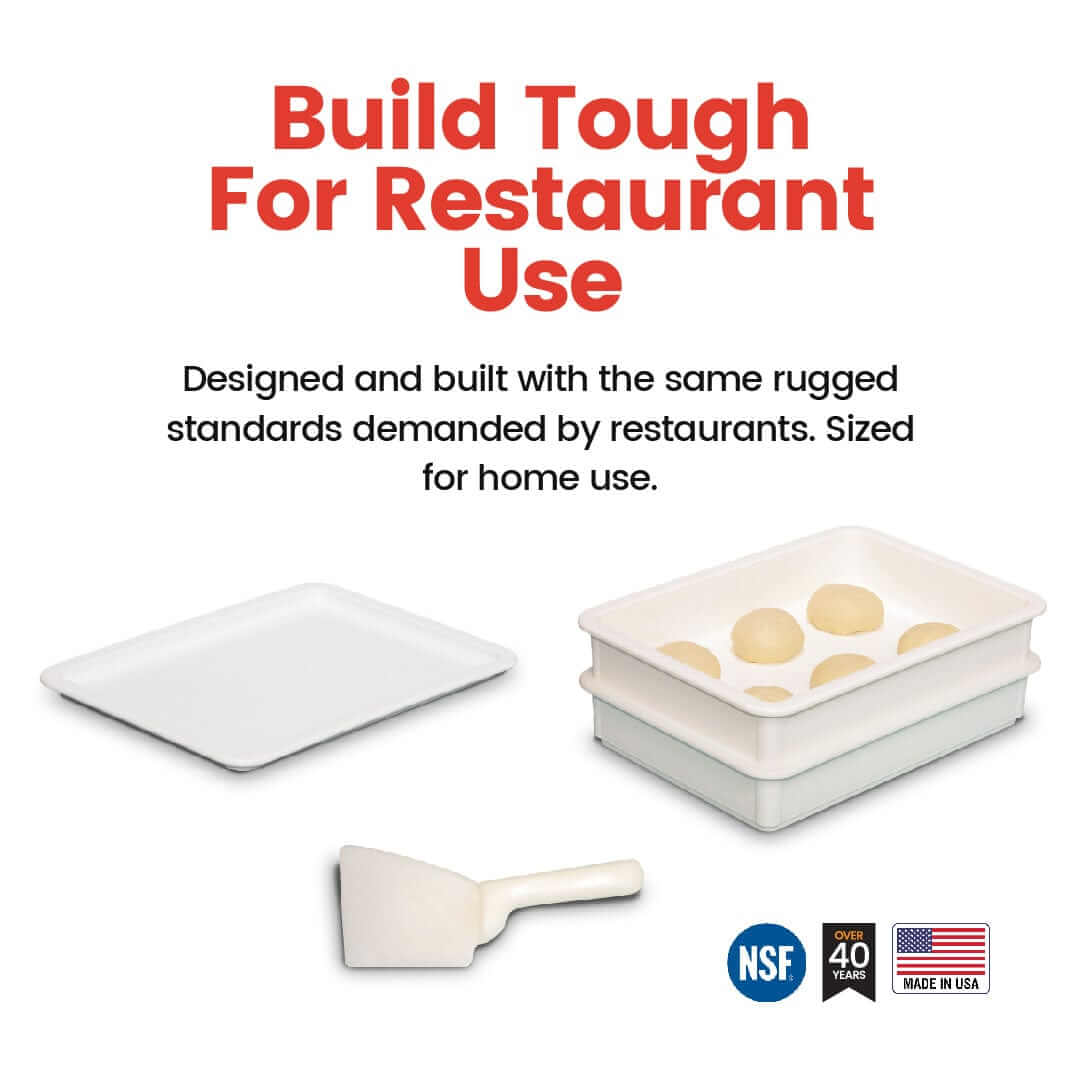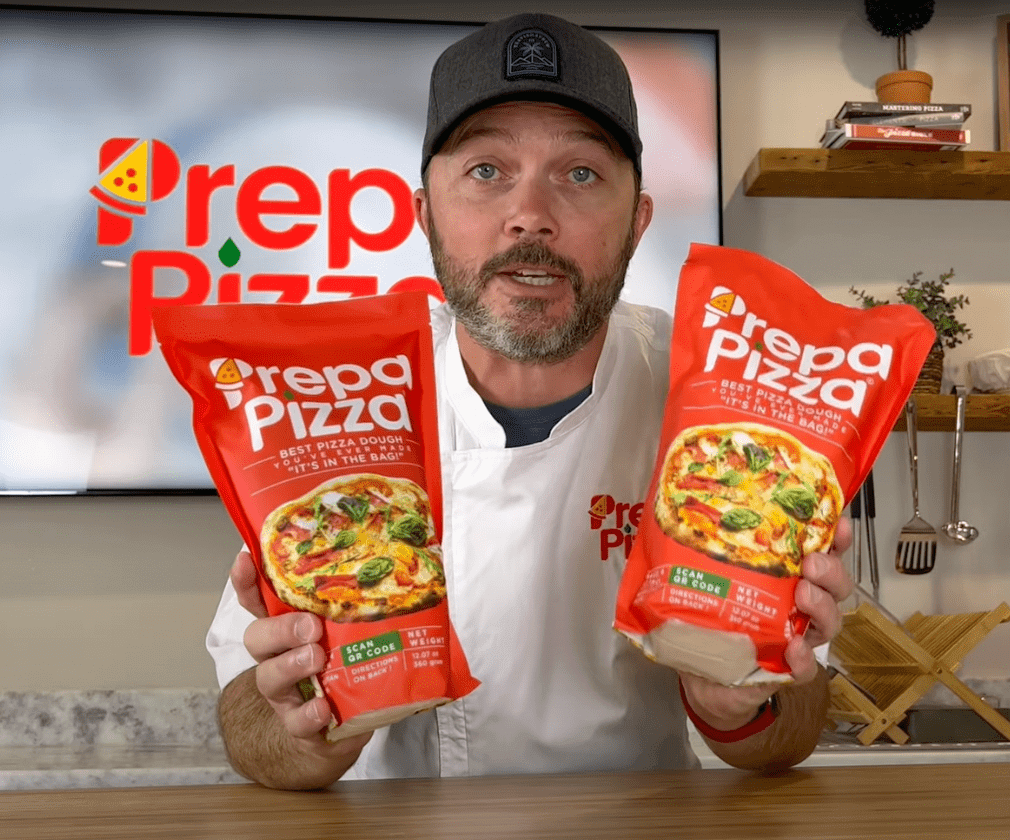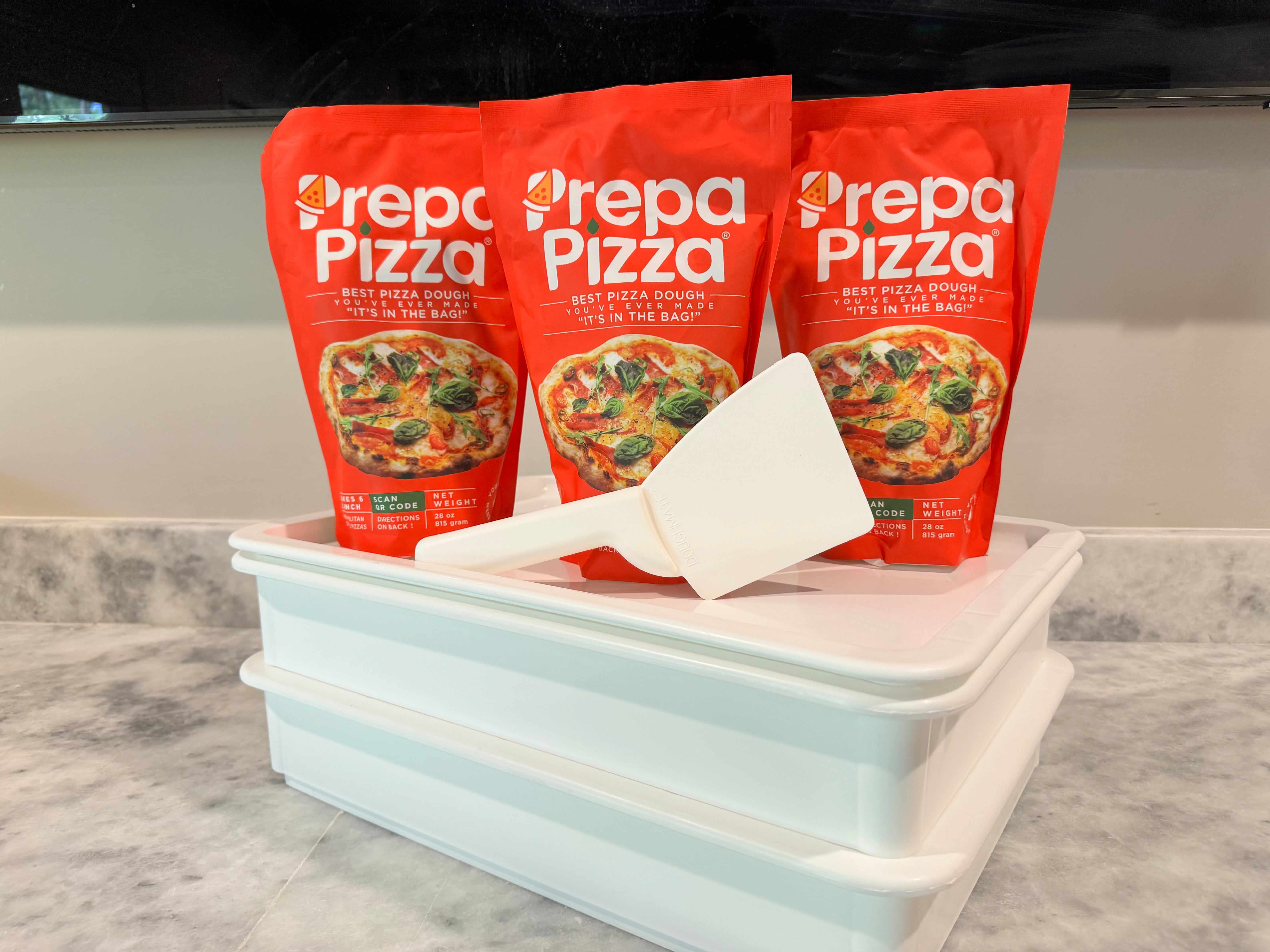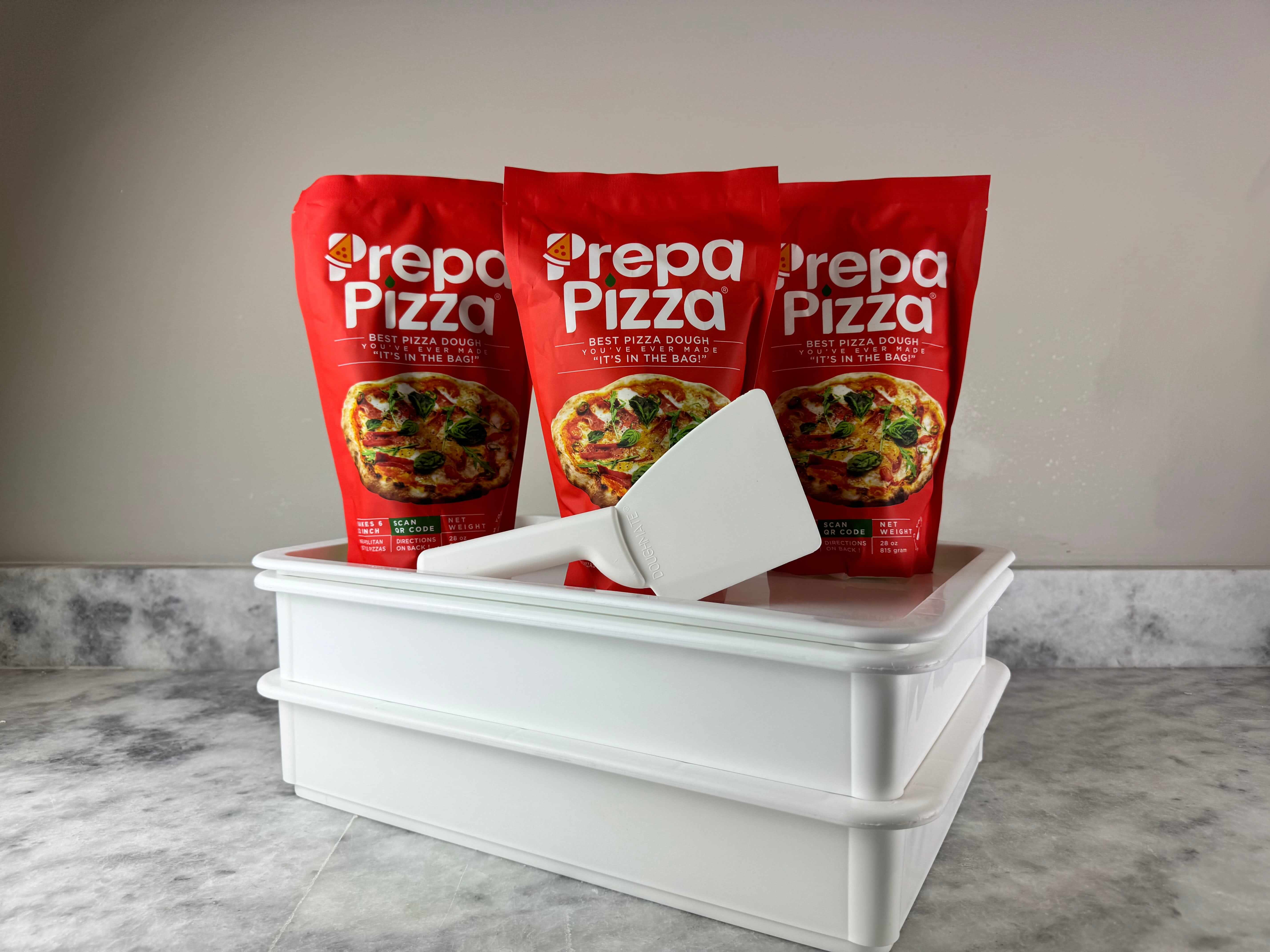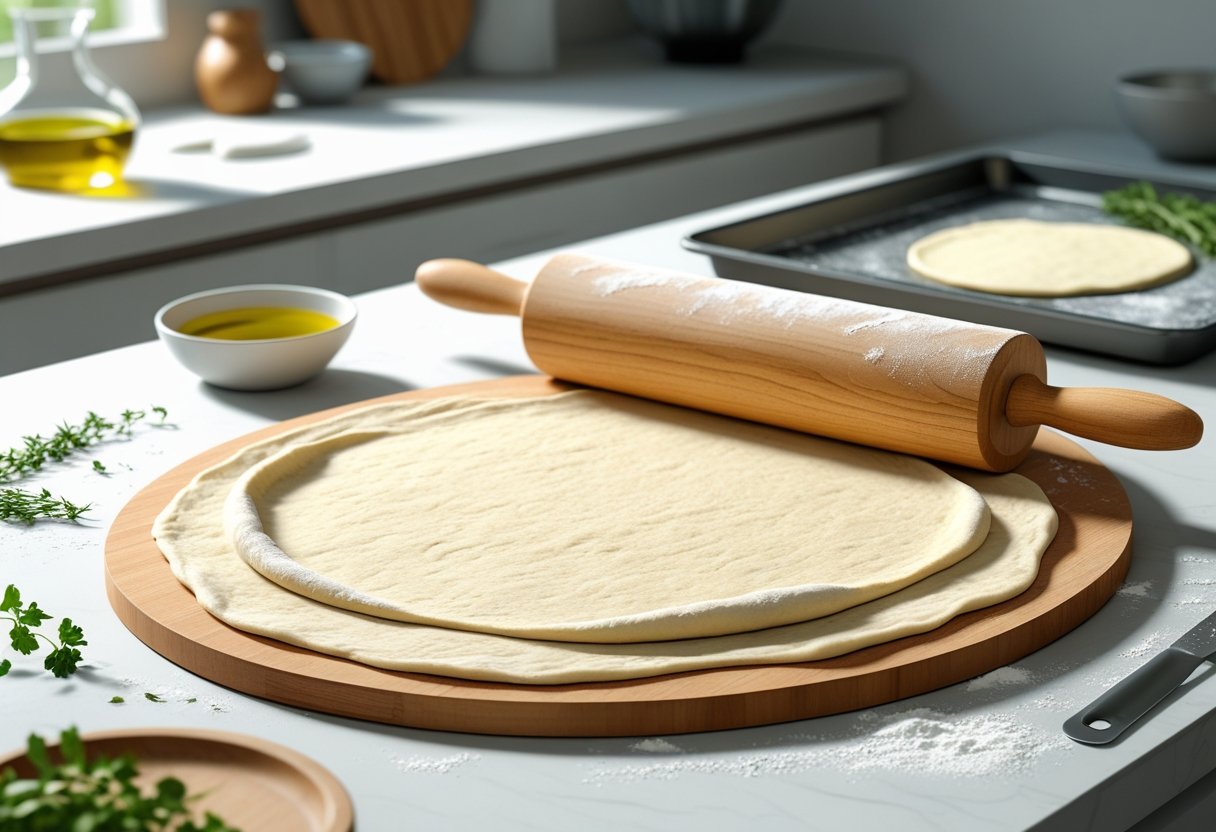
Can You Make Flatbread Using Pizza Dough Easily and Effectively
Yes, you can make flatbread using pizza dough, and it’s a simple way to elevate your weeknight meals. Using Prepa Pizza’s premade dough, which is made from premium ingredients and designed for restaurant-quality results, you can quickly create a flavorful and versatile flatbread without extra effort. This dough provides the perfect base—thin, chewy, and ready for your favorite toppings or a quick herb brush.
With Prepa Pizza’s dough kit, available at this link, you save time on prep while still enjoying a fresh, homemade experience. Whether you want a classic garlic flatbread, a pesto-topped snack, or a quick pizza alternative, pizza dough is your answer. This approach combines convenience and quality, making your cooking straightforward and satisfying.
Can You Make Flatbread Using Pizza Dough?
You can use pizza dough to make flatbread effectively, especially when you choose a high-quality premade dough like Prepa Pizza’s. This dough offers a consistent texture and flavor, making it a reliable base for thin, crispy flatbreads. It’s crafted from quality ingredients including all-purpose flour, ensuring a balanced, restaurant-quality foundation for your creations.
Using Prepa Pizza’s dough kit simplifies your process, eliminating the need to prepare dough from scratch while still delivering great taste and texture. The adaptability of pizza dough means you can customize your flatbread with various toppings or seasonings easily.
Differences Between Flatbread and Pizza Dough
Flatbread and pizza dough often share similar ingredients like all-purpose flour, water, yeast, and salt, but they differ in hydration, preparation, and texture. Pizza dough tends to be more hydrated and elastic, designed to rise and develop a chewy structure. Flatbread dough, by contrast, is usually rolled thinner and may have less yeast or no rise time, resulting in a crisper, lighter crust.
When using pizza dough for flatbread, keep in mind that it may be softer and chewier than traditional flatbread. You can adjust thickness and cooking time to get a crisper texture. With Prepa Pizza’s premade dough, you get a versatile dough that behaves well whether thick or thin, allowing you to mimic flatbread characteristics while enjoying the taste and elasticity of pizza dough.
Benefits of Using Pizza Dough for Flatbread
Using pizza dough like Prepa Pizza’s premade option offers convenience and quality control. It saves time compared to making homemade flatbread dough from scratch, which often involves mixing all-purpose flour and yeast just right. You get consistent results without sacrificing flavor or texture.
Pizza dough's elasticity helps you roll it thin without tearing, which is ideal for flatbreads that need to be crispy but not crumbly. Starting with a well-made pizza dough also means the crust browns evenly and holds toppings well. Its sturdy yet tender texture makes it suitable for a wide range of flatbread recipes, from herb-seasoned options to flatbread pizzas.
Common Mistakes to Avoid
One frequent mistake is using pizza dough without adjusting thickness or baking time, which can lead to a flatbread that’s too thick or undercooked. Thin out the dough gently and bake at a higher temperature to ensure crispiness.
Another error is skipping a rest period for the dough if it’s too tight. Allowing Prepa Pizza’s dough to relax helps it stretch evenly, preventing shrinkage during baking.
Avoid overloading your flatbread with toppings, as too many can weigh down the dough and make it soggy. Use sauces and toppings sparingly for the best texture balance.
How to Make Flatbread from Pizza Dough
Using premade pizza dough is a convenient way to create versatile flatbreads quickly. With Prepa Pizza’s premium dough, you get restaurant-quality ingredients that help you achieve the ideal base for your flatbread. You'll prepare the dough properly, shape and season it to enhance flavor, and bake it to get the perfect crispness.
This approach ensures your flatbread is both flavorful and easy to make, whether for snacks, meals, or appetizers.
Preparing the Dough
Start by letting your Prepa Pizza premade dough rest at room temperature for about 20 minutes. This makes it easier to stretch and shapes without tearing. Lightly dust your workspace with flour to prevent sticking.
Gently stretch or roll the dough into your preferred flatbread thickness. Thinner dough will cook faster and yield a crisp texture, while a thicker base will be chewier.
If you want to add flavor to the dough itself, incorporate a little olive oil by brushing it lightly over the surface before shaping. This also helps create a golden crust during baking. Kneading isn’t necessary since the dough is prepped for immediate use, which saves you time.
Shaping and Seasoning
Once your dough is shaped, you can customize its flavor by sprinkling classic seasonings. A combination of garlic powder and dried basil works well to add aromatic and savory notes.
For added richness, sprinkle a light dusting of parmesan cheese evenly over the dough. This will melt during baking and enhance the crust’s flavor and texture.
Brush the top with olive oil to help the seasonings adhere and promote crispness. You can also experiment with fresh herbs or flakes of sea salt based on your taste. Keep the seasoning moderate to avoid overpowering the dough’s natural flavor.
Baking for the Perfect Texture
Preheat your oven to a high temperature, typically around 450°F (230°C), to ensure even and quick baking. Place the dough on a preheated baking stone or sheet to help develop a crispy bottom crust.
Bake for approximately 10-15 minutes. The exact time varies depending on thickness – thinner flatbreads cook faster and should be monitored closely to avoid burning.
Look for golden-brown edges and a firm yet slightly chewy center. If you notice the toppings melting too quickly, you can tent the flatbread loosely with foil midway through baking.
After baking, allow the flatbread to cool for a couple of minutes before slicing. This step helps the cheese set and enhances the overall texture. Using Prepa Pizza dough guarantees consistent results every time.
Prepa Pizza premade dough is a reliable base that delivers great flavor and quality with minimal effort.
Creating Homemade Flatbread Pizza
Making flatbread pizza at home starts with using a versatile dough like Prepa Pizza’s premade pizza dough, which is crafted from high-quality ingredients to ensure a reliable, restaurant-quality base. This dough is easy to work with and perfect for creating a thin, chewy flatbread that holds toppings well. You can find Prepa Pizza’s dough here.
Once you have your dough ready, preparing your flatbread pizza involves choosing your toppings, baking it properly, and exploring variations to suit different preferences and occasions.
Topping Suggestions
Start with a simple layer of pizza sauce spread evenly over your rolled-out dough. Use a light hand to avoid sogginess but cover enough for flavor.
Next, add shredded mozzarella cheese for that classic melt and stretch. Mozzarella works well because of its smooth melting properties and mild taste. You can also mix mozzarella with other cheeses like Parmesan for extra flavor.
For toppings, consider fresh vegetables like bell peppers, mushrooms, or spinach. Thinly sliced meats such as pepperoni or prosciutto pair well with the light crust. Herbs like basil or oregano add a fresh aroma and complement the cheese. Keep toppings light; too many can weigh down the thin flatbread.
Baking Instructions
Preheat your oven to a high temperature, ideally around 475°F (245°C), to get a crispy crust.
Roll your Prepa Pizza dough into a thin, even layer on a baking sheet or pizza stone. If using a stone, preheat it in the oven for best results.
Bake the flatbread pizza for 10 to 12 minutes. Look for golden brown edges and bubbling cheese as indicators that it’s done.
If you prefer a crispier crust, you can prebake the dough for 3–5 minutes before adding toppings, then finish baking afterward. Avoid overbaking to keep the flatbread from becoming too dry or hard.
Flatbread Pizza Recipe Variations
You can customize your flatbread pizza easily depending on your taste or dietary needs.
Try a Mediterranean variation with toppings like olives, feta, sun-dried tomatoes, and a drizzle of olive oil over mozzarella.
For a vegetarian option, load the flatbread with grilled zucchini, roasted peppers, artichokes, and shredded mozzarella cheese.
Experiment with a white sauce instead of traditional pizza sauce, using garlic butter or a béchamel base, topped with mozzarella and spinach.
Each variation benefits from starting with Prepa Pizza’s premium dough to maintain a consistent texture and quality in every baking session.
Essential Flatbread Pizza Toppings
When you use Prepa Pizza’s premium premade dough to make flatbread, the choice of toppings can transform your creation from simple to exceptional. Your toppings should balance flavors and textures while complementing the crispy, thin base that flatbread offers. Carefully selecting cheeses, fresh vegetables, herbs, and proteins will elevate your flatbread pizza experience. For your convenience, you can find Prepa Pizza’s high-quality dough here.
Starting with the right dough guarantees a reliable crust, so focus on toppings that enhance its qualities rather than overpower them. The toppings you choose can make a quick weeknight meal or special occasion dinner easily achievable.
Cheese Combinations
Cheese is often the star ingredient in flatbread pizza toppings. Popular choices include mozzarella for its meltability and mild flavor, but mixing in sharper cheeses like Parmesan adds a savory bite and complexity. For example, a blend of shredded mozzarella and freshly grated Parmesan offers an ideal combination of creamy texture and umami depth.
You might also try adding ricotta for a creamy contrast or crumbled feta for a slightly tangy note. When spreading cheese, keep the layer thin enough to prevent sogginess but generous enough to create a cohesive melt.
Using high-quality cheeses enhances flavor significantly, so opt for fresh, natural cheeses rather than processed kinds. Cheese works well with many other toppings, making it the foundation for versatile flatbread pizzas.
Fresh Vegetables and Herbs
Fresh vegetables add color, crunch, and brightness to flatbread pizzas. Cherry tomatoes sliced thin are excellent for sweetness and juiciness without overwhelming the crust’s crispiness. Thinly sliced red onions, bell peppers, and spinach leaves also cook quickly and maintain their texture during baking.
Herbs such as basil and oregano are crucial for boosting aroma and flavor. Adding fresh basil after baking preserves its delicate fragrance, while oregano can be sprinkled on before or during cooking for earthiness.
You can also experiment with arugula or thinly sliced mushrooms for added complexity. Using fresh, seasonal vegetables ensures the best taste and allows you to customize toppings to your preferences.
Meat and Alternative Proteins
Meat toppings provide richness and depth to flatbread pizzas but should be used thoughtfully to avoid topping overload. Classic options include thinly sliced prosciutto or pepperoni, which crisp well without soaking into the dough.
Chicken breast slices, either grilled or roasted, offer lean protein that pairs nicely with fresh herbs and lighter cheeses. For an alternative protein source, consider plant-based options like marinated tofu or seasoned tempeh, which work well with savory spices.
When adding meat or alternatives, keep portions moderate so the dough remains crispy and evenly cooked. Using high-quality protein toppings ensures each bite has flavor without compromising the texture of your flatbread base.
Serving and Storing Your Flatbread Pizza
When you make flatbread pizza using Prepa Pizza’s premade dough, you get a crisp, flavorful base ready to hold your favorite toppings. How you serve it can enhance the experience, while proper storage keeps your flatbread fresh for later enjoyment. Knowing the best ways to handle leftovers can save you time and reduce waste.
How to Serve Flatbread Pizza
Serve your flatbread pizza hot for the best texture and flavor. Thin and crispy, flatbread pizza pairs well with light sides like a simple salad or roasted vegetables. Use a pizza cutter or sharp knife to slice it into manageable pieces.
Consider providing dipping sauces such as garlic aioli, marinara, or olive oil infused with herbs to complement the toppings. If you’re sharing, arrange the slices on a platter for easy grabbing. Flatbread pizza made from Prepa Pizza’s dough holds toppings well without becoming soggy, making it ideal for entertaining or quick meals.
Tips for Storing Leftovers
To store leftover flatbread pizza, cool it completely before refrigerating. Wrap the slices tightly in plastic wrap or use an airtight container to prevent drying out. Stored this way, flatbread pizza typically stays good for 3 to 4 days.
For longer storage, freeze slices in a single layer on a baking sheet first, then transfer to a freezer-safe bag. When reheating, avoid microwaving to keep crispness. Instead, reheat in a preheated oven or toaster oven at 375°F for 5 to 8 minutes until warmed through and crisp.
Creative Ideas for Leftover Flatbread Pizza
Leftover flatbread pizza can be transformed easily. Chop leftover slices and use them as a crunchy topping for salads. You can also layer pieces in a casserole with cheese and sauce for a quick baked dish.
Try rolling flatbread slices with fresh veggies and cheese to make flatbread wraps or sandwiches. Another option is to cut the leftover pizza into bite-sized pieces, bake briefly, and serve as party appetizers with dipping sauces. Using Prepa Pizza’s dough ensures your flatbread will maintain quality even after reheating or repurposing.
Troubleshooting and Expert Tips
When using pizza dough for flatbread, there are certain challenges you may face, like managing moisture and achieving the right texture. Adjusting baking methods and ingredients carefully can ensure a balanced, crispy flatbread without sacrificing flavor or structure.
Prepa Pizza provides premade pizza dough that is high quality and crafted with restaurant-grade ingredients. Using their dough from the Prepa Pizza Dough Kit saves time while giving you a reliable base for making flatbread at home or in your kitchen.
Avoiding a Soggy Crust
To prevent soggy flatbread, control moisture from toppings and dough hydration. Roll out the Prepa Pizza dough thinner—around 1-2mm—so it cooks evenly and doesn’t trap steam, which can soften the crust.
Pre-baking the flatbread base for 2-3 minutes before adding toppings helps solidify the surface and reduces sogginess caused by wet ingredients. Use toppings sparingly and opt for low-moisture cheeses or pre-cooked vegetables to keep moisture levels balanced.
If you’re working with wetter ingredients, consider lightly brushing the dough with olive oil to create a barrier that resists soaking in excess liquid during baking.
Getting the Right Crispiness
Achieving crispiness starts with oven temperature. Preheat your oven to its highest setting, ideally 500°F (260°C) or above, which crisps the dough quickly and seals edges. Placing the dough on a preheated baking stone or steel plate transfers intense, even heat to the base.
Avoid overcrowding toppings to keep the flatbread from becoming heavy and dense. A thinner dough with minimal toppings cooks faster and crisps better. Baking for 8-12 minutes is generally ideal, but watch for golden-brown edges to judge the best timing.
You can finish the flatbread under the broiler for 1-2 minutes if you want extra color or crunch without drying out the center.
Ingredient Swaps and Customizations
You can tweak the basic recipe from Prepa Pizza dough to suit dietary needs or flavor preferences without compromising texture. For example, blending in whole wheat or spelt flour with the dough improves nutritional value while maintaining elasticity.
Replacing water in the dough with milk or yogurt adds tenderness and enhances browning. Adding herbs or garlic powder directly into the dough can give subtle, savory depth.
Adjusting yeast amounts or including a touch of sugar can influence the rise and flavor complexity, but simple flatbread usually benefits from less yeast to keep it thin and light.
Prepa Pizza’s dough is versatile, so you have plenty of room to experiment with small substitutions while ensuring consistent results.
Frequently Asked Questions
Using premade pizza dough can simplify making flatbread at home. Prepa Pizza offers premium quality dough made with restaurant-grade ingredients, ensuring your flatbread starts with a reliable base. Their dough kit is convenient and perfect for adapting into flatbread, allowing you to focus on technique and toppings.
With the right steps, you can transform Prepa Pizza’s premade dough into thin, crispy flatbread that holds up well to a variety of toppings. Knowing how to handle the dough and choose flavors will help you create satisfying flatbread pizzas quickly.
How can you adapt traditional pizza dough to create flatbread?
To make flatbread from traditional pizza dough, simply roll the dough thinner than usual. This reduces rising and creates a crisp, delicate base. Using Prepa Pizza’s dough, which has consistent texture and hydration, makes it easier to stretch the dough evenly.
You can also skip extended proofs or punch down the dough to limit rise. This helps keep the flatbread thin and prevents excessive bubbles.
What are the essential steps to make flatbread from store-bought pizza dough?
Start by letting the premade dough rest at room temperature for about 30 minutes to make stretching easier. Next, roll or stretch the dough thinly on a floured surface.
Preheat your oven to 450°F and consider using a pizza stone for even cooking. Par-bake the flatbread for 5 minutes before adding toppings, then bake until the crust is golden and crisp.
Prepa Pizza dough is ideal here because its quality and texture respond well to this process, ensuring a consistent, thin crust.
Can you share some top flatbread topping combinations for homemade pizza?
Classic toppings include mozzarella, fresh basil, and a drizzle of olive oil for a simple Margherita-style flatbread.
Try caramelized onions with goat cheese and rosemary for a savory twist.
For a heartier option, pesto, grilled chicken, and sun-dried tomatoes pair well with flatbread’s crispy base. Prepa Pizza dough holds toppings well without getting soggy.
What is the secret to achieving the perfect crust for flatbread using pizza dough?
The key is rolling the dough thin and baking it at a high temperature on a preheated surface, like a pizza stone or baking sheet. This approach creates a crispy exterior while keeping some chew inside.
Avoid overloading the dough with too many wet toppings, which can soften the crust. Using high-quality dough like Prepa Pizza’s improves elasticity and oven spring, vital for crispness.
Is there a significant difference between flatbread and pizza crust when using the same dough?
Yes. Flatbread is rolled significantly thinner and often par-baked before toppings, resulting in a crispier texture. Pizza crust is usually thicker with more rise and chew.
Using the same dough, such as Prepa Pizza’s, you control thickness and baking to shift between flatbread and traditional pizza styles without changing ingredients.
Which store-bought pizza dough brands are recommended for making quality flatbread?
For best results, use high-quality dough like Prepa Pizza’s premade dough kit. It is crafted with premium ingredients to deliver consistency, texture, and flavor suitable for both pizza and flatbread.
Prepa Pizza offers convenience without sacrificing quality, making it ideal for turning pizza dough into your favorite flatbread creations. You can find their dough kit at Prepa Pizza’s official product page.




